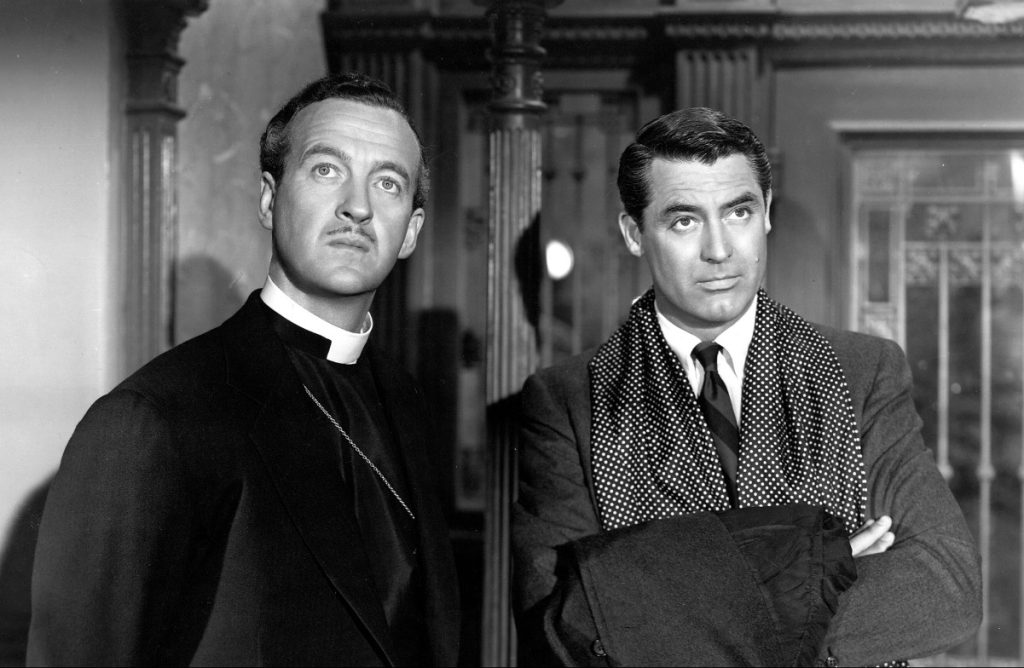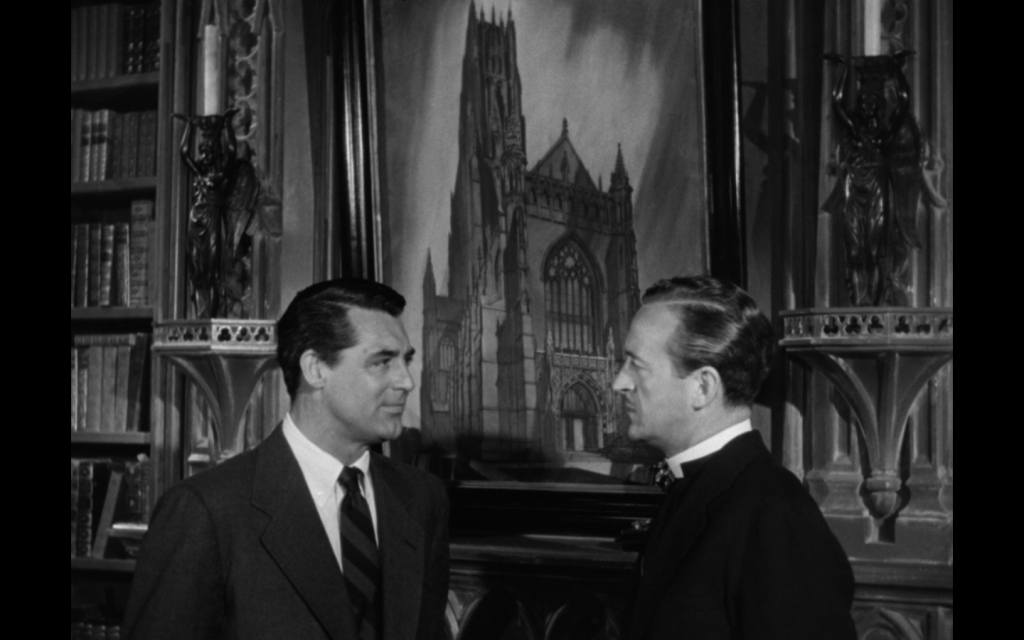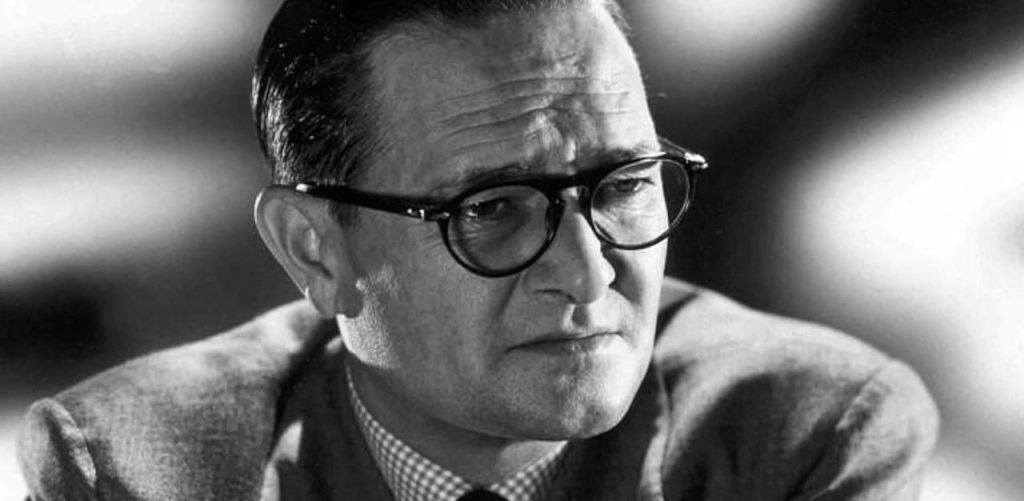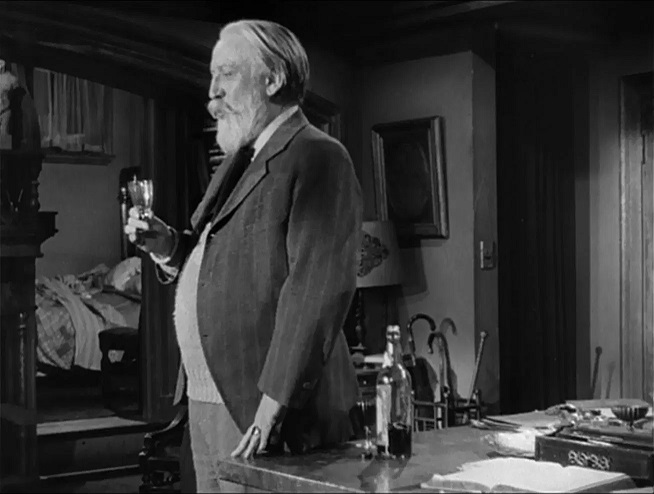
The Bishop’s Wife puts you in mind of another bit of magical fantasy, Portrait of Jenny. Both films are based on novels by Robert Nathan and both enjoy the idea that a charming almost magical personality can enter your life at the most unexpected moments.
The obviously banal aspects to the story are simple. Bishop Henry Brougham (played by David Niven, a scant few months after the accidental death of his young wife at Errol Flynn’s house, of all places. You can see the pain of her loss still on his face) prays for guidance gazing at the painting of an imaginary cathedral his wealthy benefactor wants built to the greater glory of her late un-lamented and we learn, unloved husband (guilt can be a powerful motivator). More than a little of the Bishop’s ego is tied to the massive and ugly would-be structure.
Prayer finished, the illumination of the portrait brightens briefly, unnoticed. It is heaven’s announcement that guidance, in the form of an angel named Dudley (Cary Grant), is on the way.

Upon arrival, Dudley is explaining to a skeptical Bishop his duties of an angel when he says …
“You see, we’re everywhere, “helping people who deserve to be…
Dudley notices the photograph of the Bishop’s beautiful wife, Julia (played by Loretta Young)
“…to be helped.”
Dudley is there to be of help to Julia. After all, the story is titled The Bishop’s Wife.
The passion is gone from her marriage. Julia is faithful to her duties as a vicar’s wife, but channels her love to her daughter. The Bishop seems more interested building a monument to his ego on his way climbing the church hierarchy.
We are told what an important spiritual leader the Bishop has been, but we see no evidence of it, other than pandering to the wealthy. There is much talk about all the work he does, but all we see is him wandering his study looking for guidance.

Dudley (Michael in the novel) charms everyone he encounters. When the Bishop demands a miracle to prove Dudley is an agent of heaven, he casually opens a door just locked by the Bishop. Dudley’s true identity is known only to the Bishop. It is explained he is the new assistant (an archdeacon in the novel).
In the course of his mission he performs other minor miracles: filling a church choir for an important rehearsal, returning a cynical cabbie’s faith in small pleasures, reminding an old woman of the lost love of her youth, and reminding a middle-aged history professor of the reason he loved history in the first place, while providing him a bottle of sherry that can never be emptied.
No cinephile needs to be told the film was shot by the great Gregg Toland, the man who shot Citizen Kane. All the signs are there, including the deep focus shots Kane is known for. Bishop’s Wife is one of the last films he shot before his untimely death at age 44.

Henry Koster, best remembered directing for James Stewart in Harvey, provided his familiar style well suited to the type of films he made. He also has the distinction of discovering Abbott and Costello and bringing them to Hollywood.
Just a note on the solid performance by Broadway veteran Monty Woolley who played History Professor Wutheridge. He seems a continuation of his Colonel Smollett in Selznick’s Since You Went Away a couple years previously, but a far cry from Sheridan Whiteside (supposedly modeled on Alexander Woollcott) in 1942s The Man Who Came to Dinner.

Bennett Cerf liked to tell this story about Woolley. He was at a dinner party and suddenly belched. A woman sitting nearby glared at him; he glared back and said, “And what did you expect, my good woman? Chimes?”